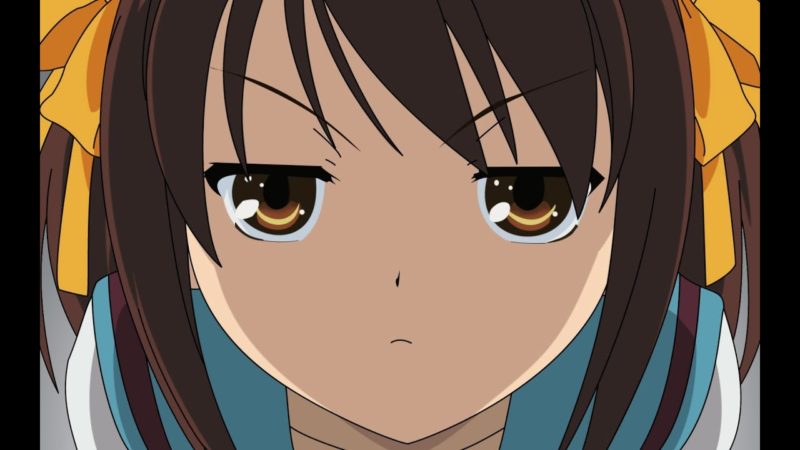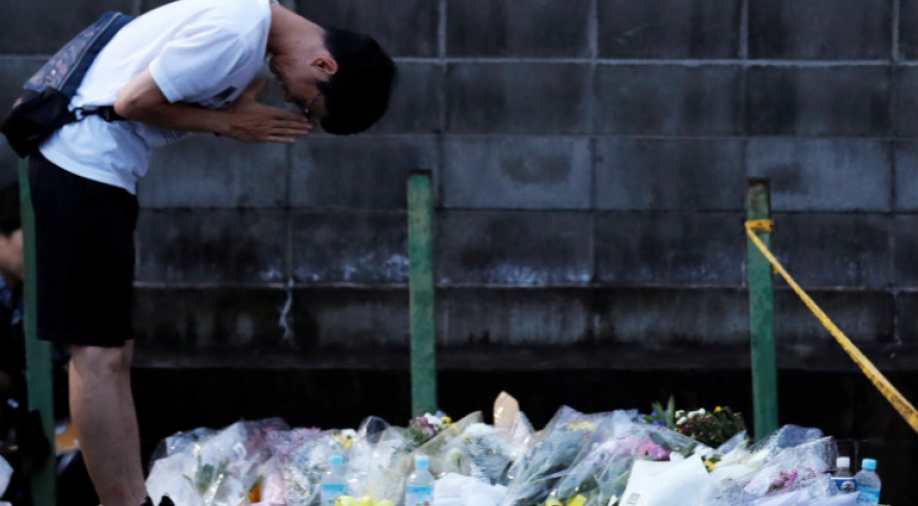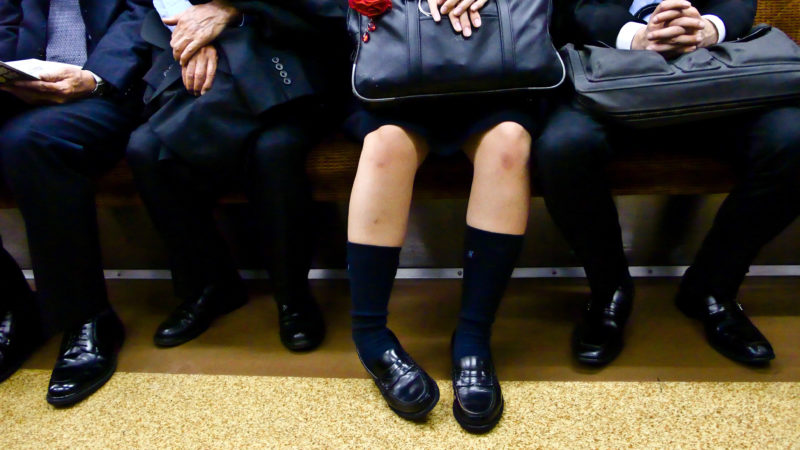
In 2019, Shinji Aoba broke into Kyoto Animation studio (also known as KyoAni), sprayed gasoline, and ignited it. He escaped to the nearby train station before collapsing from the burns he also sustained. Witnesses reported (BBC, 2019):
“A person with singed hair was lying down and there were bloody footprints,” a 59-year-old woman living nearby told news agency Kyodo.
“He seemed to be in pain, irritated and suffering, but also angry as if he was resentful. I heard him saying something like ‘You copied it’,” a neighbour said.
Witnesses reported Aoba shouting statements like “You copied it!” and “drop dead” as he started the fire. Aoba claimed KyoAni had plagiarized his ideas. Firefighters found 33 bodies: 2 on the first floor, 11 on the second floor, and 20 on the stairs leading from the third floor to the top floor. KyoAni, at the time. had 70 people in the building. The total count would end at 36 with 32 more injured (BBC, 2019; Annio, 2024). Investigators discovered Aoba had bought 40 liters, 9 gallons, of gasoline. The two containers were found at the scene of the fire. Aoba didn’t escape the fire unscathed; he suffered burns over 90% of the his body (McCurry, 2024). The fire marked the worst mass death in Japan since a 2001 arson attack in Tokyo’s Kabukicho district, which killed 44 (Annio. 2024).
If you aren’t aware, Kyoto Animation (which started in 1981) is the studio behind series K-on, Melancholy of Haruhi Suzumiya, Violet Evergarden, and many other titles. It helped popularize moe designed characters, shifting the landscape of anime character designs for the past decade or so. The studio is known for paying its animators a regular salary; paying per frame of output stands as the industry payment standard (BBC, 2019). The studio also publishes manga.
In 2024, a jury found Aoba guilty. During the trial, families of the victims attended, and one person broke down in tears as the judge ruled (McCurry, 2024). Aoba entered in a wheelchair pushed by a prison officer to receive his sentence. He declined to speak. His sentence: death.
Aoba’s defense claimed he had a mental disorder and couldn’t be held criminally responsible. However (McCurry, 2024):
But in his ruling on Thursday, the judge ruled that Aoba was “neither insane nor suffering diminished mental capacity at the time of the crime”, the public broadcaster NHK said.
The judge also stated (Annio, 2024):
“The horror and pain of the victims who died in Studio 1, which turned into a hell in an instant, or who died afterward, is beyond description,” the judge said.
Aoba joins, as of December 2023, 107 other people on Japan’s death row. Japan reserves the death penalty for people convicted of multiple murders.

We often hear about mental health defense pleas in media-covered court cases. This smears people who struggle with mental health disorders. People with mental health disorders carry an unfounded stigma of being potentially violent. This doesn’t help the conversation about mental health. In the United States, discussing mental struggles remains taboo. A lot of progress has been made toward normalizing mental struggles, but mental health remains a more taboo topic than physical health. People have no problem admitting they have diabetes, but many will think twice about admitting they have an anxiety disorder in person. Online admission of mental health disorders, on the other hand, has cachet. While seeking a supportive community is a part of healing, people who identify with their mental struggle, wearing it as a type of status, doesn’t help conversation. People who struggle with various disorders they would rather be rid of don’t want to be grouped with these attention seekers. I’m painting in broad strokes; there’s a spectrum between these stances. Where people fall on this spectrum, in part, depends on where they live. In my rural, conservative area, you don’t talk about mental health. You just don’t. You deal with it in silence. Therapy is fine. Just don’t talk about it. Mental health is as taboo as talking about sexual health. So, people go online for support. Other areas can be more open.
No matter where people sit, media coverage of mental health pleas in court doesn’t help the acceptability and fear that surrounds mental health. People associate mental health struggles with perpetrating violence. In reality, people with mental health struggles are more often victims of violence rather than perpetrators (Thornicroft, 2020; Teasdale, 2009). However, people with some types of mental disorders, such as schizophrenia and bipolar disorder, are more likely to be violent than other people in the general population if they have multiple layers of morbidity (Thornicroft, 2020):
These rates are moderately raised compared with the general population, with an important caveat: people with triple morbidity (ie, individuals with severe mental illness and substance use disorder and antisocial personality disorder) are substantially more likely to be violent than people with severe mental illness alone.
The majority of people who struggle with mental health will not be violent, and they have an increased risk for being victims of violence and exploitation. Some combinations of mental disorders can make people more likely to be violent, and these are the situations we hear about from the court system. The frequency of media coverage makes this reality seem a larger problem than it is. People who watch repeated coverage of illegal immigration, murders, car crashes, rapes, or ketchup shortages will be led to believe these are far larger problems then they are in reality. Because media likes to attach mental health struggles with violent crime, and repeat this constantly, people believe the problem is larger than it is. Media does this because fear and outrage keeps people watching. And eyeballs means profit.
Kyoto Animation shifted expectations people have from the anime industry through their high-quality production, and, most importantly, their better work conditions. The studio hired more women than other studios, aimed at reducing the overwork (grindingly long hours) typical to the industry, and even offered maternity leave (Orsini, 2019). Violet Evergarden: The Movie marked the first movie since the arson (Le, 2021), showing the studio’s focus on quality remains. Violet Evergarden centers on healing from trauma, making it a fitting project for the studio’s revival. If you look on Kyoto Animation’s website, they are back to releasing a few series, such as Sound! Euphonium 3. As of this article, the studio continues to recover and revive. It’s easy to forget that lives sit behind the anime and manga we consume.
Mental health, despite media coverage, leaves people vulnerable to becoming victims. They don’t need media coverage to make their struggles more difficult.
References
Annio, Francesca and Yeung, Jessie (2024) Japan court sentences arsonist to death for deadly attack on Kyoto Animation studio. CNN. https://www.cnn.com/2024/01/25/asia/kyoto-animation-arson-verdict-japan-intl-hnk/index.html
BBC (2019) Kyoto Animation fire: Arson attack at Japan anime studio kills 33. BBC https://www.bbc.com/news/world-asia-49027178.
Le, Phuong (2021) Violet Evergarden: The Movie review–a breathtaking return for Kyoto Animation. The Guardian. https://www.theguardian.com/film/2021/jun/30/violet-evergarden-the-movie-review-kyoto-animation
McCurry, Justin (2024) Kyoto anime studio fire: Japanese man sentenced to death for arson attack that killed 36. The Guardian https://www.theguardian.com/world/2024/jan/25/kyoto-animation-fire-japan-man-shinji-aoba-sentenced-to-death-arson-anime-studio
Orsini, Lauren (2019) The impact of Kyoto Animation: 5 things you need to know. Forbes. https://www.forbes.com/sites/laurenorsini/2019/07/19/the-impact-of-kyoto-animation-5-things-you-need-to-know/
Teasdale, Brent (2009) “Mental Disorder and Violent Victimization,” Criminal Justice and Behavior 36, no. 5: 513-535
Thornicroft, Graham (2020) People with severe mental illness as the perpetrators and victims of violence: time for a new public health approach. The Lancet 5 (2). https://www.thelancet.com/journals/lanpub/article/PIIS2468-2667(20)30002-5/fulltext




I was wondering if you read this a while back: https://otakuusamagazine.com/doctor-of-kyoto-animation-arson-suspect-talks-preventing-tragedies-like-these/
Also, it’s far easier to say that you have depression and/or anxiety compared to bipolar disorder or schizophrenia.
I do feel like we really don’t understand mental health well enough despite awareness campaigns.
It’s interesting how often, after the fact, we see people like Dr. Ueda discuss prevention. Yet, society constantly fails to implement such prevention matters. Mental health or otherwise. Why do you think society refuses to change to reduce these events?